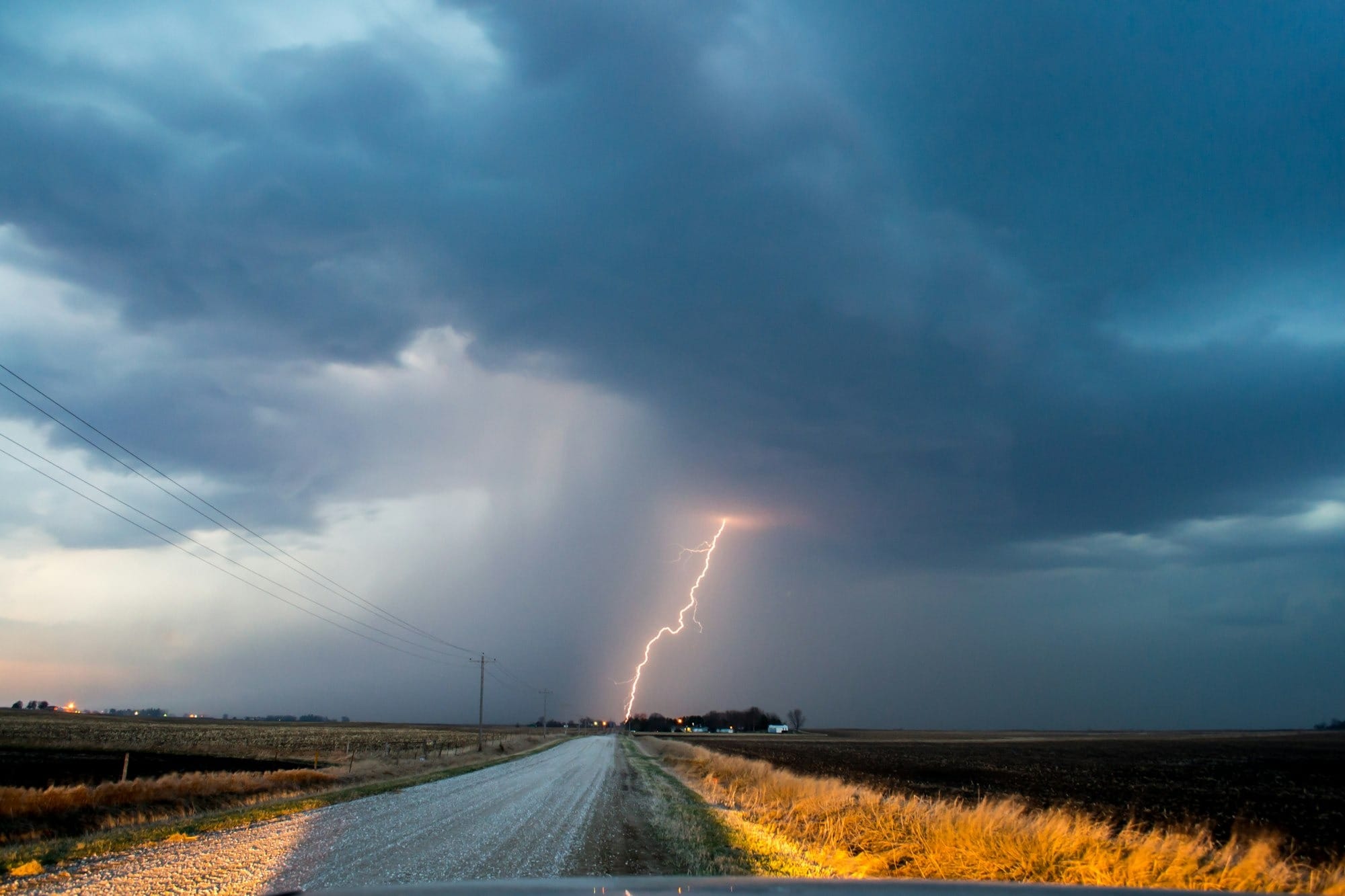What to Do for Horses in a Thunderstorm
Thunder, lightning, and heavy rain can spook even the most seasoned horses, and as owners, our job is to keep them safe and calm until the skies clear. With a little preparation and the right plan, you can protect your horse and reduce their stress when the weather turns wild.

A sudden summer storm rolling in over the pasture can turn any calm barn day into a scramble. Thunder, lightning, and heavy rain can spook even the most seasoned horses, and as owners, our job is to keep them safe and calm until the skies clear. With a little preparation and the right plan, you can protect your horse and reduce their stress when the weather turns wild.
Bring Horses to a Safe Location
If you know a storm is on the way, bring horses into a sturdy, well-built barn or shelter before it hits. A solid structure offers protection from lightning, heavy rain, and wind-blown debris. Avoid metal-sided run-in sheds during active lightning if they are not grounded. If you cannot get them inside in time, make sure they have access to a low, open area away from tall trees, lone fence posts, or power lines, as these can attract lightning strikes.
Secure the Environment
Once inside, check stalls and aisle ways for anything that could blow over or startle your horse. Loose tools, buckets, or feed bags can become hazards in strong wind. Close windows and doors to keep rain from flooding the barn and to block sudden flashes of lightning. Horses often feel safer in familiar surroundings, so make sure they have their usual water, hay, and space to move without risk of injury.
Keep Horses Calm
Thunder and lightning can be frightening for horses, especially if they are already nervous types. Staying calm yourself helps your horse stay calm too. Softly talking, offering hay or special treats, and keeping routines as normal as possible can help distract them from the noise. Some horses settle better if they can see barn mates, so consider adjusting stalls so they have visual contact with each other during the storm. Turning the radio up can help distract them from the noise of pouring rain & thunder. Many horses benefit from wearing ear plugs during storms and some even do better with products like the Fenwick Liquid Titanium Mask (think Thundershirt for dogs, but it goes on their face!).
Avoid Handling During the Worst of It
When lightning is actively striking nearby, it is safest to avoid leading or riding horses outside. Metal equipment, wet ground, and the sheer unpredictability of a frightened horse can make this dangerous. If your horses are already secured in a safe place, wait until the heaviest part of the storm passes before moving them or checking fences and pastures.
Check for Damage and Stress After the Storm
Once the storm has passed, inspect your horses for any injuries and check fences, gates, and shelters for damage. Look for signs of stress such as sweating, trembling, or pacing, and offer water and hay to help them settle. If your horse is unusually anxious or you notice an injury, address it promptly with appropriate care or a call to your veterinarian.
Final Thought from the Barn
Thunderstorms can be unpredictable, but having a plan keeps both you and your horse safer. Bring them to a secure spot, keep them calm, and wait out the worst before returning to normal routines. The more you prepare ahead of time, the more confident you will feel when the clouds start to roll in. Your horse will take their cue from you, so a steady hand and a calm voice go a long way in helping them weather the storm.

